Ha Giang, situated at the northernmost point of our homeland, has been graced by nature with majestic beauty. It boasts numerous renowned scenic spots of historical significance, such as the Dong Van Karst Plateau, the Ma Pi Leng Pass, the sacred Lung Cu Flagpole, and many more.
Table of Contents
Location of Ha Giang.
Ha Giang is located in the northernmost region of Vietnam, with the following geographical borders:
- To the east, it borders Cao Bang province.
- To the west, it borders Yen Bai and Lao Cai provinces.
- To the south, it borders Tuyen Quang province.
- To the north, it shares borders with the autonomous regions of Choang and Miao Van Son in Yunnan Province, China, as well as the administrative district of Bach Sac in the Choang Autonomous Region of Guangxi, People’s Republic of China.
The administrative center of the province is Ha Giang City, which is located 320 km from the capital, Hanoi. The region has complex terrain, featuring high rocky mountains and numerous rivers and streams.
Introducing Ha Giang Tourism
Over the past decade, with the rise of the backpacking trend among young people, Ha Giang has emerged as a beloved destination with its winding and challenging roads that wind their way through the most beautiful tourist spots in Ha Giang.
The dazzling beauty of terraced fields, buckwheat flower fields, the Ma Pi Leng Pass, the Lung Cu Flagpole, and the simple lives of ethnic minorities in villages have been widely shared and gradually made Ha Giang a renowned destination in the North.
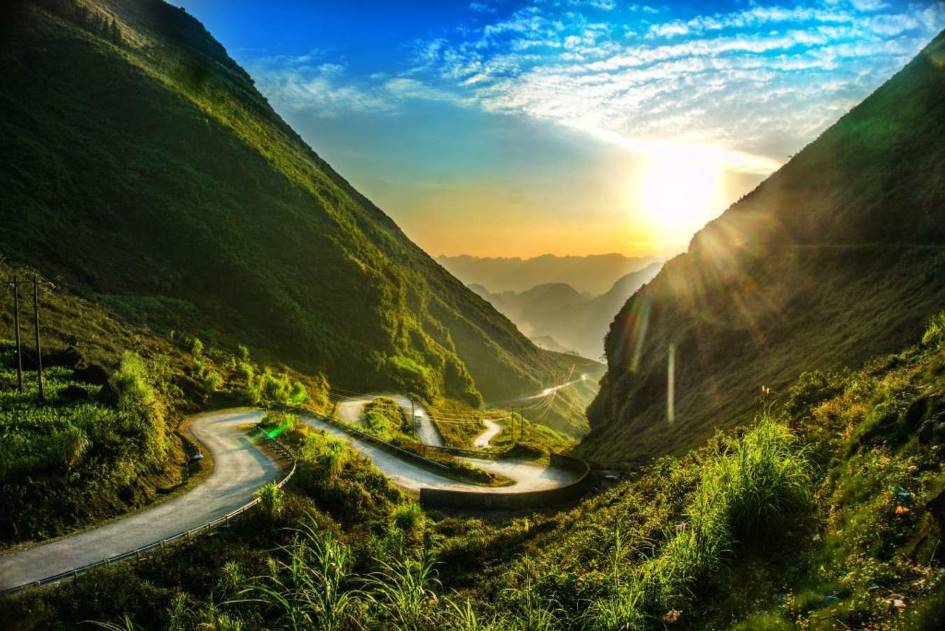
Now, every harvest season when the terraced fields in Hoang Su Phi turn golden or when the triangular flower fields bloom endlessly across the rocky plateau of Dong Van, travelers eagerly come to Ha Giang to witness the beauty of this land.
Ha Giang is also home to 22 brotherly ethnic groups with ancient traditions. In Ha Giang, you can still find villages that preserve their pristine beauty, rich indigenous culture, and offer unforgettable experiences for tourists.
Travel Seasons
If someone asks when is the best time to visit Ha Giang, you can say that in Ha Giang, every season has its own beauty, and all of them satisfy the wanderlust and exploration of travelers.
Golden Rice Season
Lasting from August to October every year, during this period, the terraced fields on hills or in the valleys at the foot of the mountain passes are covered with a brilliant golden color, resembling a beautiful painting.
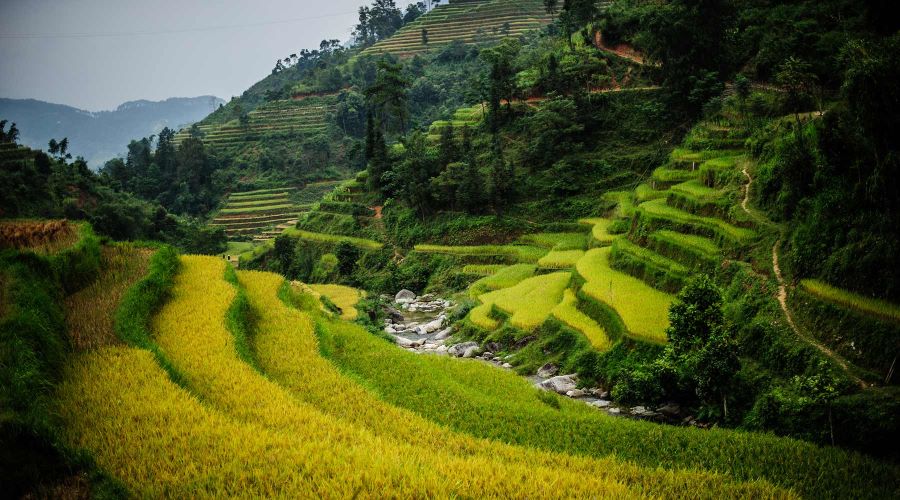
To admire the terraced rice fields during the harvest, you should visit Hoang Su Phi, where the terraced fields are recognized as a national heritage, and the Hoang Su Phi Terraced Field Festival is held during this time.
Buckwheat Flower Season
Typically from October to December every year, when you visit Ha Giang during the buckwheat flower season, you will go from one amazement to another as the buckwheat fields burst into bloom simultaneously.
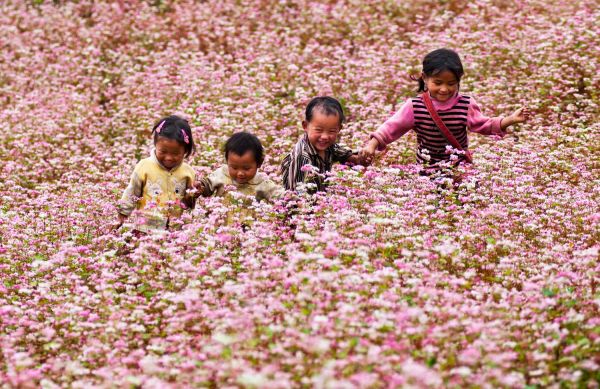
Buckwheat flowers are grown in many gardens and hills across the rocky plateau of Dong Van. To witness the most beautiful buckwheat fields, you can go to the following areas: Pho Cao, Lung Cu, Sủng Là, Ma Pi Leng Pass, and Thach Son Thanh.
Flower and Festival Season
Every spring, from January to March in the lunar calendar, Ha Giang is adorned with various flowers, including plum blossoms, cherry blossoms, and yellow mustard flowers that bloom all over. You can find these flowers almost everywhere on the rocky plateau.
During this time, traditional festivals of various ethnic groups are held with great enthusiasm, attracting many tourists. Some noteworthy festivals in Ha Giang include the Long Tong Festival of the Tay people, the Lap Tinh Festival of the Dao people, and the Gau Tao Festival of the H’Mong people.
Fruit Harvest Season
Taking place from April to May, many fruit trees like plums, apples, and red pears are commonly grown in Ha Giang. In the summertime, you will see many small stalls by the roadside offering a variety of fruits like cherries, apricots, peaches, and hawthorns.
At local markets, tourists can also admire H’Mong and Dao girls wearing their traditional costumes and carrying baskets of fruits to sell. You can buy fresh and delicious fruits at reasonable prices here.
GETTING TO HA GIANG
From Hanoi, you can only reach Ha Giang by road. For travelers in the southern region, you can travel to Hanoi and then commence your journey to explore Ha Giang using either public buses or small tourist vans.
Additionally, if you want a faster and more convenient option, you can consider renting a car with a driver in Hanoi through VnCarRentals.com. Their experienced and professional drivers will make your trip to Ha Giang smoother. Book a car rental service from Hanoi to Ha Giang today for the best travel experience.
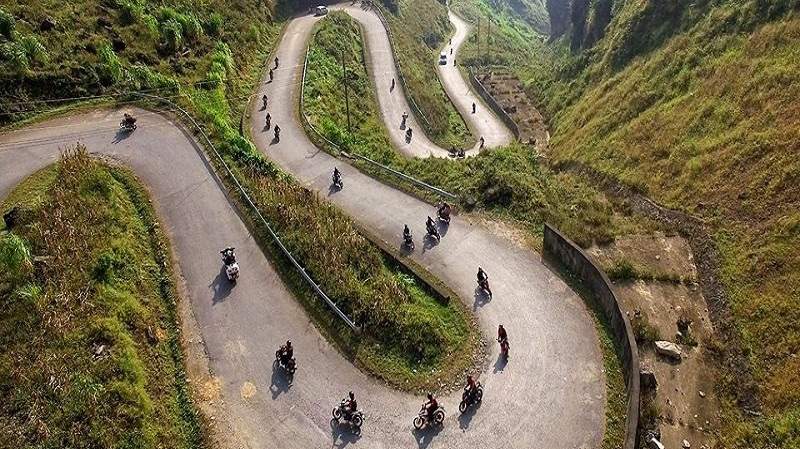
The road to Ha Giang is exceptionally beautiful, and many tourists choose to ride motorcycles or drive cars to fully appreciate the grandeur of the northeastern mountains and forests.
If you prefer not to drive yourself, you can book sleeper bus tickets at the My Dinh Bus Station. There are multiple departures daily to Ha Giang. You can choose from two main routes:
- Take National Highway 2A, passing through Vinh Phuc, Tuyen Quang, and on to Ha Giang.
- Take National Highway 21, passing through Phu Tho, Tuyen Quang, and on to Ha Giang.
Upon reaching Ha Giang, it’s advisable to rent a motorcycle to continue your journey. There are many places to rent motorcycles in Ha Giang city for tourists starting their exploration.
When renting a motorcycle, be sure to test it to ensure safety before renting because the road to the Dong Van Karst Plateau has many dangerous and challenging mountain passes.
BEAUTIFUL TOURIST ATTRACTIONS
There are beautiful tourist spots scattered throughout Ha Giang City, Quan Ba, Yen Minh, Dong Van, Meo Vac, and Hoang Su Phi. It’s impossible to visit all of these places in a single trip.
Typically, tourists choose one of the following routes for their Ha Giang journey:
- Ha Giang – Dong Van – Meo Vac Route: This is a popular choice because it takes you through many beautiful and famous tourist attractions.
- Yen Minh – Hoang Su Phi Route: This route is favored by tourists who enjoy viewing the terraced fields of Hoang Su Phi.
- Hoang Su Phi – Xin Man – Deo Gio – Thac Tien Route
Some Ha Giang Tourist Destinations
Kilometer Zero Milestone
This is the marker that signifies the starting point of the Hanh Phuc (Happiness) Road, connecting Ha Giang City with four highland districts. It is also the beginning point for the journey of exploring Ha Giang that most travelers will go through. Taking a check-in photo is something you can do to mark the memory when you set foot here.
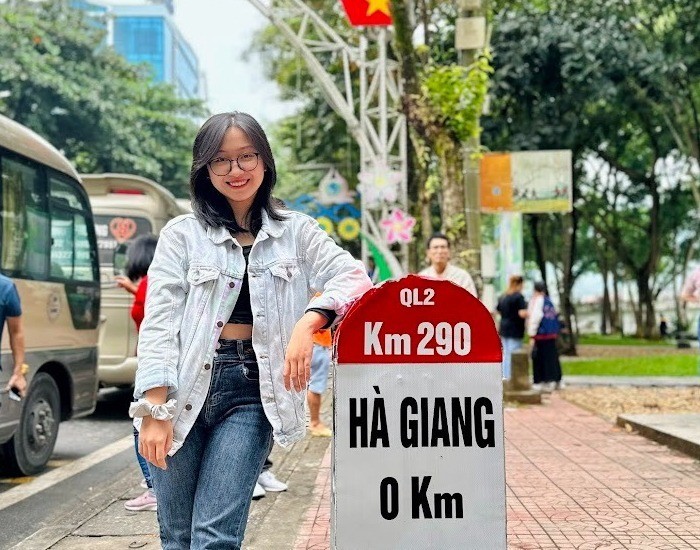
Lung Khuy Cave
Located about 3 km from Tam Sơn town in Quan Ba district, Lung Khuy Cave was previously closely associated with the spiritual life of the H’Mông people in Lùng Khúy village. When you step inside the cave, you will be overwhelmed by a world of countless unique stalactites and stalagmites.
Dong Van Karst Plateau
The Dong Van Karst Plateau stretches across four districts: Quan Bạ, Yên Minh, Đồng Văn, and Meo Vac in Ha Giang. On October 3, 2010, the dossier for “Dong Van Karst Plateau Geopark” was officially recognized as a Global Geopark by UNESCO’s Global Geoparks Network Advisory Council.
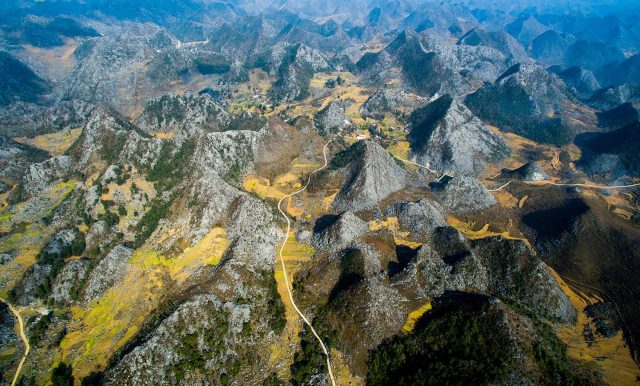
Sung La
Sung La is a serene green valley located in Dong Van district. It nestles amidst rugged limestone mountains and features sturdy houses with weathered roofs. The place exudes simplicity and tranquility.
House of Pao
This is the house of Mr. Mua Sua Pao, a H’Mong native of Ha Giang. Director Ngo Quang Hai chose this house as the filming location for “The Story of Pao,” adapted from the literary work “Tiếng đàn môi sau bờ rào đá” by writer Đỗ Bích Thuỷ. After being chosen as the backdrop for the film, the house became a popular attraction for numerous tourists and has also appeared in several other movies.
Lung Cu Flag Point
The Lung Cu Flag Point is situated atop Lung Cu peak, approximately 1,700 meters above sea level, in Lũng Cú commune, Đồng Văn district, Ha Giang province. In reality, the Lung Cu Flag Point is not the northernmost point of Vietnam; the true northernmost point is about 3 km from the flagpole.
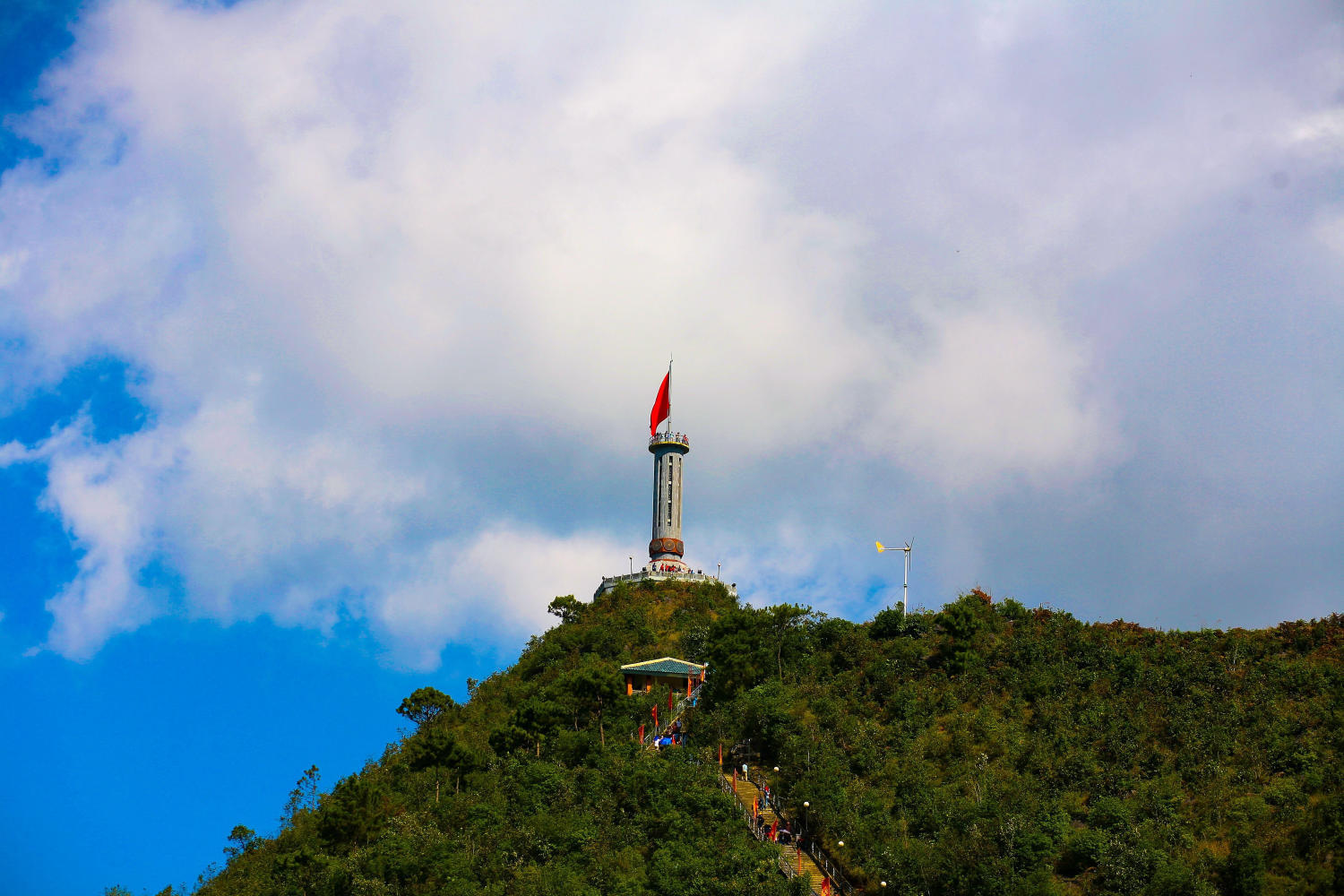
The Lung Cu Flag Point has a long history, having undergone numerous renovations and preservations. The new flagpole has a pentagonal shape and stands over 30 meters tall, serving as a destination where tourists come to take photos as a way to show they’ve reached this sacred land and touched the sacred flagpole.
Dong Van Ancient Town
The Dong Van Ancient Town is situated in Dong Van town, Ha Giang. The central area of Dong Van town once belonged to Dong Quan commune, Nguyen Binh district, Tuong Van precinct, Tuyen Quang province. It boasts a rich history of architecture and culture spanning hundreds of years.
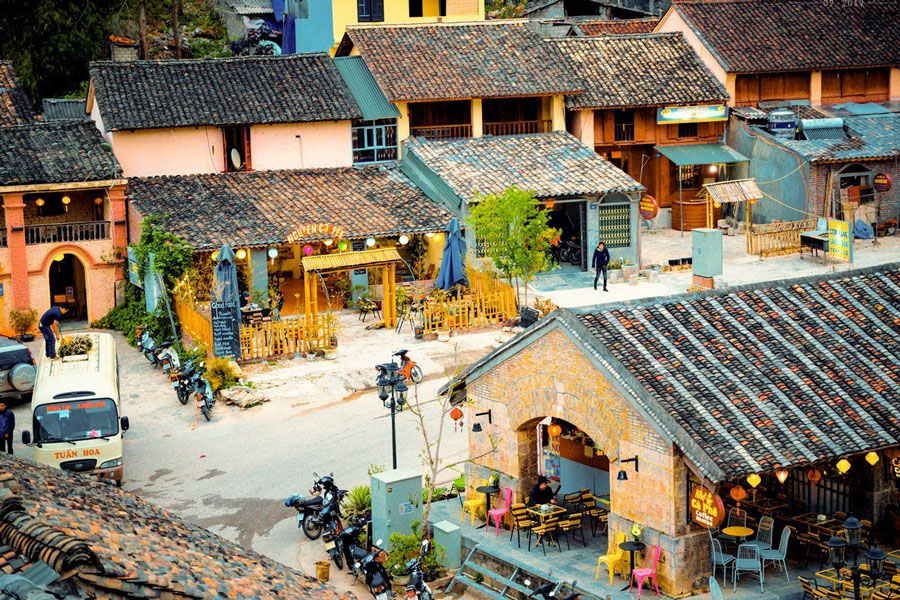
In the 1880s, during the French colonial era, a plan was made for the town, leaving important architectural features behind. Notably, the old Dong Van market, constructed from stone in the 1920s, has been nearly preserved to this day.
Twin Mountain Quan Ba
When people visit Ha Giang, they all wish to witness the natural wonder and hear the touching legend of Quan Ba Twin Mountains. These unique and enchanting twin mountains resemble two round, alluring peaks, akin to a fairy’s supple breasts nestled amidst the majestic landscapes.
These Ha Giang tourist destinations mentioned are just a few small suggestions for your Hà Giang journey. There are many more interesting and appealing places waiting for you to explore.
“Check-in” Spots When Visiting Ha Giang
Once you’re in Ha Giang, everyone has their photos “checked in” at several locations such as Kilometer Zero Milestone Ha Giang, Chin Khoanh Pass, Lung Ca Flag Point, Vuong Family Palace, Pao’s House, Quan Ba Twin Mountains, Yên Minh Pine Forest, Nho Quế River, Quản Bạ Heaven’s Gate, Mã Pì Lèng Pass, Hanh Phuc Road, Sung La Valley, Dong Văn Old Town, Bắc Sum Pass, Lùng Khuý Cave, and more. Take pictures with buckwheat flowers, mustard flowers, and with the ethnic Hà Giang children as well.
Cuisine in Ha Giang
Hà Giang’s cuisine is incredibly diverse and rich in the traditional flavors of the local ethnic communities.
To create these distinctive dishes, the people go through elaborate preparations to serve the guests. Below are some popular and delightful dishes you shouldn’t miss.
Buckwheat Cakes: The buckwheat flower is one of Hà Giang’s most famous symbols. It’s not well known that this flower is a staple food for the locals. After the flowers wither and form seeds, they are harvested and processed into round, thick cakes. These cakes are fragrant and slightly sweet. When visiting Hà Giang, try a freshly baked buckwheat cake while admiring the buckwheat fields and letting your spirit soar with the wind.
Au Tau Porridge: Au Tau is a type of root vegetable that grows on the rocky mountains of Hà Giang. After harvesting, the locals process it, often cooking it with rice and pork shank to enhance the nutritional value of the porridge. When eating Au Tau porridge, locals often add ingredients like chicken eggs, pepper, and spring onions to warm themselves in the cold mountain climate.
Thang Den: Similar to a dessert like “bánh trôi” and “bánh chay” that the Kinh people traditionally make during the Cold Food Festival, Thắng Dền is made from glutinous rice flour from Yên Minh, renowned for its soft and fragrant characteristics. It’s served with a little apricot blossom syrup and some crunchy roasted peanuts, adding a delightful touch.
Egg Rice Rolls: Ha Giang’s egg rice rolls are served with a broth made from bones, imparting a natural sweet flavor and rich nutrients. The rolls are mixed with eggs and steamed, creating a unique taste. The combination of egg’s richness and the slightly chewy rice roll makes for an unforgettable flavor.
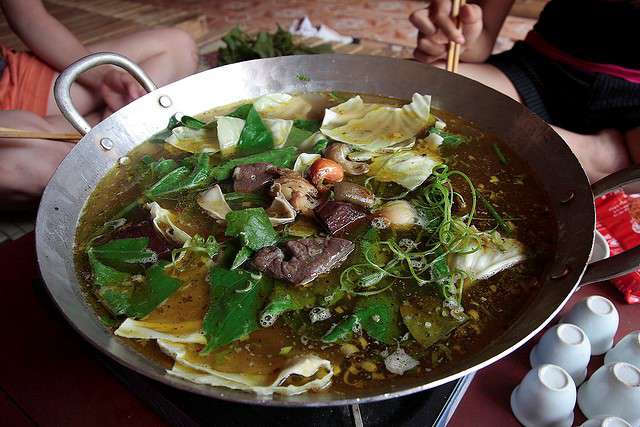
Thang Co: You can find this dish in many places in the northwestern region, and it’s quite popular in Hà Giang. It’s made from horse meat and organs and is used as a side dish for H’Mông men during drinking sessions. Nowadays, as horse meat becomes scarcer, people tend to use buffalo and cow meat to make Thắng Cố. To taste this unique Hà Giang dish, visit the Đồng Văn market.
Grilled Moss: Grilled moss is a traditional dish of the Tày ethnic group in Hà Giang. Moss is collected from rocks in the streams, carefully chosen to be young moss. It is then cleaned and grilled with various herbs and seasonings such as lemongrass, shallots, and sesame seeds. All the ingredients are mixed, wrapped in dong leaves, and grilled on a charcoal stove. The best time to enjoy grilled moss is when it’s hot, offering a cooling and detoxifying effect.
Five-Color Sticky Rice: This dish is prepared from fragrant and sticky glutinous rice, soaked in various colored natural water to create a visually pleasing and delicious bowl of rice.
Sour Pho: The sour pho in Hà Giang is handmade according to a special recipe. This creates a unique combination of soft and chewy noodles with a flavorful, sour, and slightly sweet broth made from vinegar, sugar, and various spices.
Bamboo-Tube Rice: A popular dish in Hà Giang, the round and sticky rice grains are put inside bamboo tubes and sealed at both ends before grilling on a charcoal fire. This cooking method makes the rice both soft and firm. When you eat the rice with sesame salt and take in the majestic Hà Giang scenery, it creates an unforgettable experience.
Roasted Horse Meat: This dish is prepared with great care. Fresh meat is cleaned and marinated with typical seasonings like mac khen and hung up in the kitchen to soak up the flavors. When you eat it, you can enjoy the meat directly or steam it until it’s tender and serve it with hot chili sauce.
Corn Wine with Leaves: This renowned specialty of Hà Giang is made from traditional corn leaves, with corn grown on the rocky plateau. This corn wine is unique in that it doesn’t make you feel tired or uncomfortable when drinking. It has a light fragrance of corn and a pleasant sweetness.
HOTELS AND HOMESTAYS
Most travelers who come to Hà Giang are looking to experience and explore the traditions of the local ethnic villages. Therefore, they often prefer to stay close to the local people.
Homestay services in Hà Giang have developed significantly, and most tourists choose homestays in the style of stilt houses. They enjoy traditional local dishes as part of their daily meals.
Hà Giang’s attractions are quite far apart, so it’s advisable for travelers to book accommodations near their final destination of the day. This way, they can rest and prepare for the next day’s journey after a long trip.
The quality of accommodations in Hà Giang has significantly improved in recent years and generally meets the basic needs of travelers in terms of food, rest, and lodging. The facilities are also quite comfortable, so you can book with confidence.
Traveling to Ha Giang offers a wide range of exciting activities, dining experiences, and relaxation options. Your trip will become even more wonderful when you explore new horizons and savor special dishes. Leave behind the hustle and bustle of daily life and come to Ha Giang for a unique experience!


